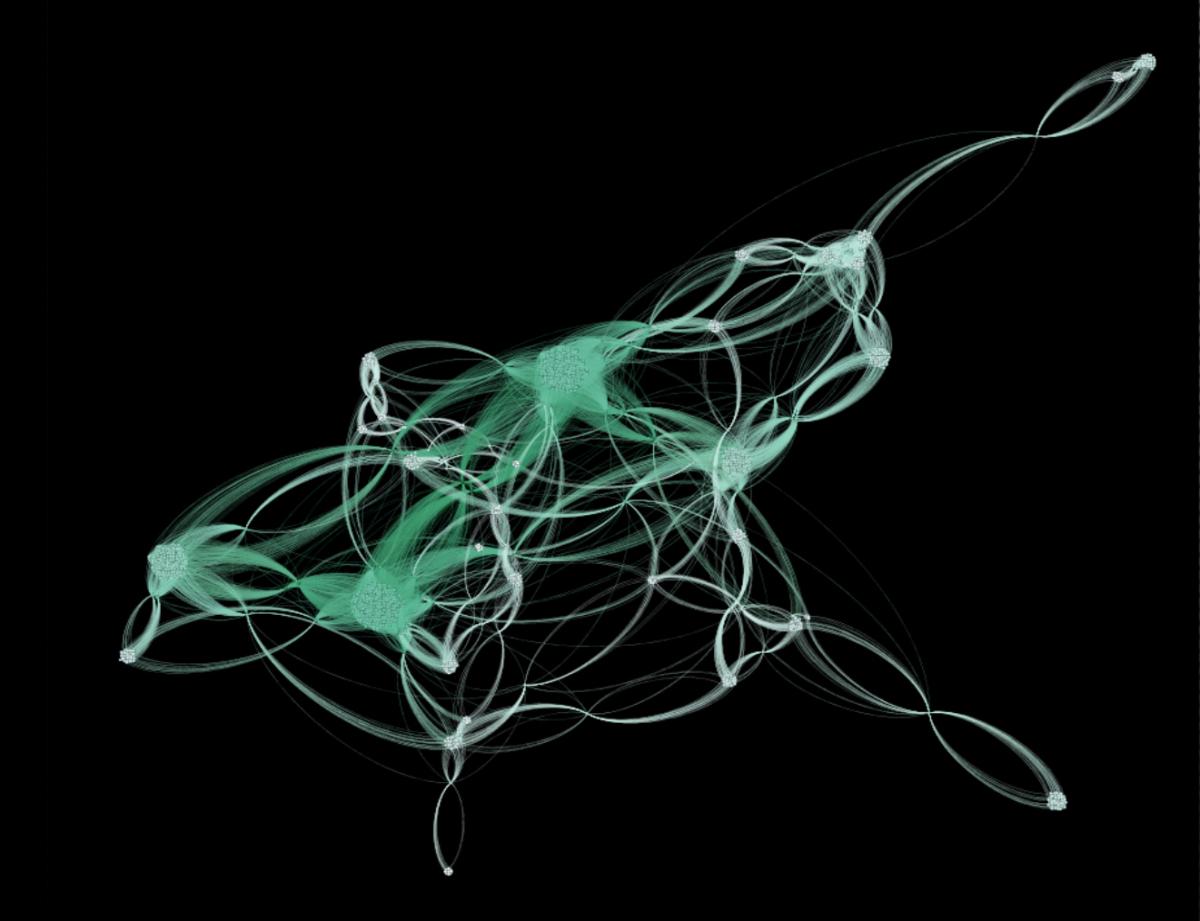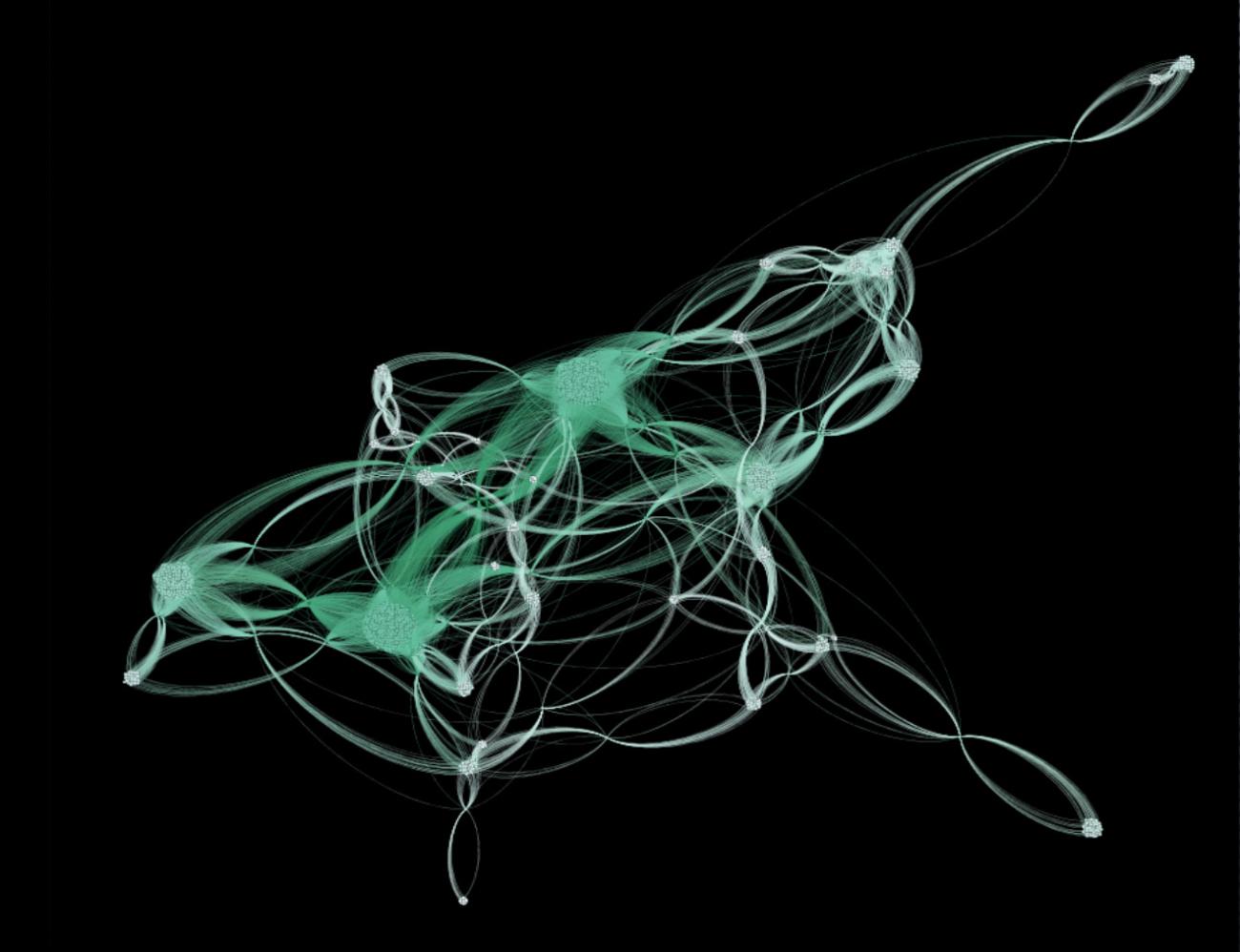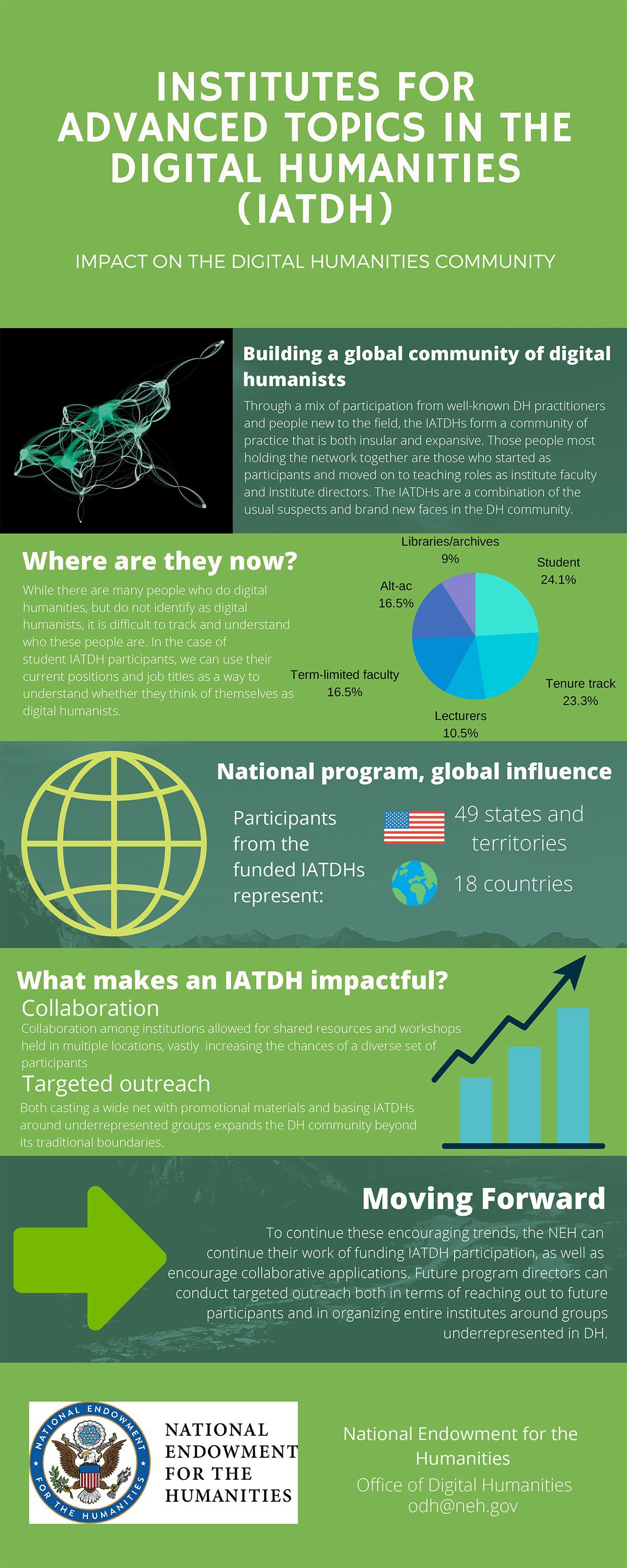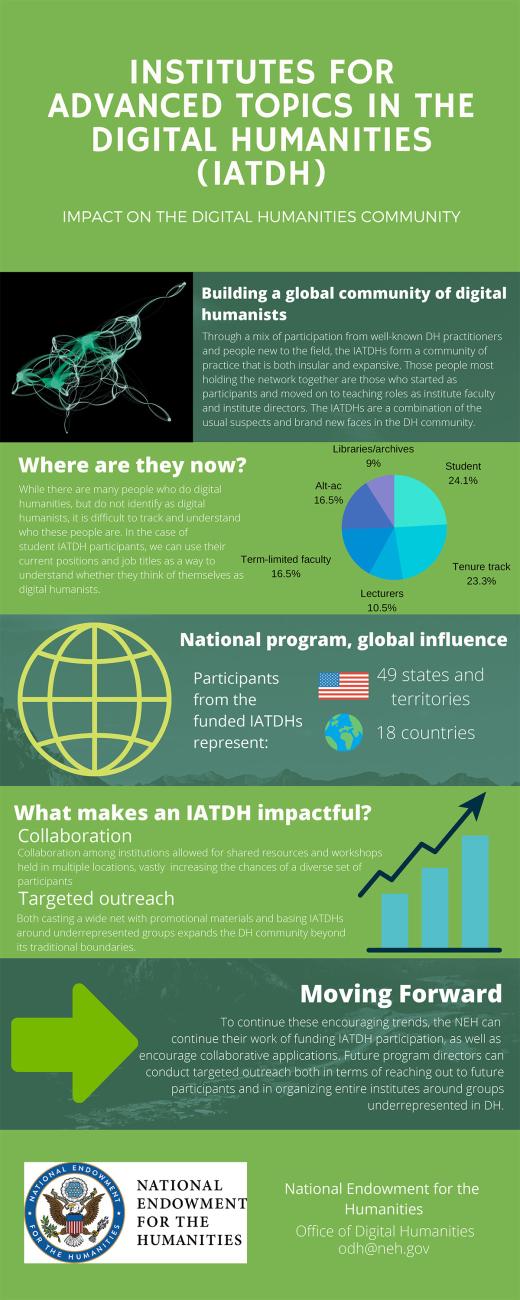National Program, Global Impact: The Institutes for Advanced Topics in the Digital Humanities
This guest blog post was written by Sara Mohr, a PhD candidate in Assyriology at Brown University and an intern with the NEH Office of Digital Humanities in the summer of 2020. You can find the complete report in the ODH’s Resource Library.
When does an institute become a community? What makes a community diverse? The NEH’s Institutes for Advanced Topics in the Digital Humanities (IATDH) program supports national or regional training programs for scholars, humanities professionals, and students with the goal of broadening and expanding their knowledge of and experience with the digital humanities. IATDHs can be single events or multiple offerings to different audiences. They may be as short as a few days or as long as several weeks. No matter the format, the IATDH program does good work in moving us toward a more inclusive digital humanities community.
As an intern with the NEH's Office of Digital Humanities, I sought to understand what makes the IATDH community diverse and how we can use the institute program to build a more inclusive DH community. I collected information on more than 1,500 individuals who participated in IATDHs, and used network analysis and other techniques to identify the most connected and influential people involved with the IATDH program. My goal: to gain insight into what makes their IATDHs as impactful as possible.
What do we know about the participants in the IATDH program? Currently 9% of IATDH participants come from institutions other than universities or colleges. Though based in the US, the IATDHs reach participants in 49 states and territories and in 18 different countries. The IATDH program is making important and significant strides in reaching a wide, global audience, but there is always room for improvement.
Designing supportive communities
A network analysis of the IATDH program helped to identify two strategies that institute organizers can use to support diverse learning communities. As this network graph shows, some IATDHs help to establish tightly connected communities (the dark clusters in the center) that nevertheless draw in a diverse set of individuals (the smaller clusters around the edges). Some IATDHs are particularly effective at building connections and recruiting participants from varied professional and institutional backgrounds. This seems to be because they use two key strategies: geographic range and targeted recruitment.
Geographic range: Building an Accessible Future for the Humanities (2013) and Workshops on Sustainability for Digital Projects (2018) structured their institutes in a way that allowed for greater geographic and institutional diversity. In both cases, rather than gathering in one location, the faculty teams visited various locations to lead their sessions. Traveling institutes are like concert tours: the more performances there are, the more people are able to attend. Though we should keep in mind that multi-performance shows can be hard on the performers.
Targeted recruitment: Workshops on Sustainability and both iterations of Doing Digital History (2014 and 2016) cast a wide promotional net and targeted specific groups of underrepresented yet interested people to build their participant community. Similarly, the program directors of An Institute for Community College Digital Humanists identified community college faculty as underrepresented in the DH community and as being less likely to secure institutional funding to travel to one of the existing, permanent DH institutes.
Comparing communities
The IATDH program is not the only summer program where digital humanists can learn methodologies and tools for DH. Most comparable to the IATDH program is the Digital Humanities Summer Institute (DHSI) at the University of Victoria in Canada. Like the IATDH program, DHSI offers professional development training to humanities scholars and practitioners working in and around academia. However, while the IATDH community is broadly distributed across locations and institution types, DHSI is much closer-knit and more focused on academia. 43% of DHSI workshop leaders are former participants and 50% of the participants are repeated DHSI attendees. Additionally, only 3% of participants are not affiliated with a university or college.
These differences between the IATDHs and DHSI are the result of two main issues: cost/funding and location. IATDHs provide travel funding or stipends that allow participants to attend these professional development courses at no cost. In contrast, DHSI participants must pay for their tuition and all travel expenses, although many scholarships and bursaries are available. Furthermore, IATDHs are held in different institutions across the US each year, while DHSI offers a broad slate of mini-courses each year at the University of Victoria.
Every DH summer program fills a different role in the community, satisfying different community needs. Since 2001, DHSI has built a core DH community with a tight-knit group of researchers and collaborators. By removing the barrier of cost for DH professional development, the IATDH program is able to support current and future DHers in a way that DHSI’s model does not.
Towards a more inclusive DH
Now that we know what makes IATDHs such inclusive programs, what can the NEH do to make sure these encouraging trends continue?
First, the NEH can encourage applicants to design more institutes led by a collaborative team based at multiple institutions. Collaboration between institutions allows for more locations for workshops and reduces strain on single institutions.
Second, while planned participant recruitment is already part of the review criteria for the IATDHs, the NEH could encourage more targeted outreach as seen in Doing Digital History and the Workshops on Sustainability.
Third, future program directors can create more IATDHs like An Institute for Community College Digital Humanists. By organizing an entire institute around an underrepresented group in DH, the program directors were able to reach a significant number of new DH practitioners as well as expand the DH community.
The IATDH program already shows encouraging trends in vocational and geographic diversity, serving as a bright point among DH summer institutes in making a larger and more inclusive DH. By encouraging targeted outreach, collaboration among multiple institutions, and institutes centered around traditionally underrepresented groups, the IATDH program can continue to grow the DH community.



